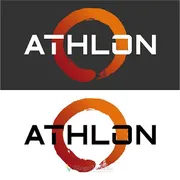AMD Athlon II X4 638

AMD Athlon II X4 638: A Retrospective on the Budget Processor in 2025
Introduction
Even in 2025, older processors remain relevant for enthusiasts and budget-conscious users. The AMD Athlon II X4 638, released in the early 2010s, is still found in workstations and home PCs. Let's explore if it's worth considering today and in what scenarios it might be useful.
Key Specifications: Architecture and Performance
Architecture and Process
The Athlon II X4 638 is based on the K10 microarchitecture (codename Llano) with a 32 nm manufacturing process. This is one of AMD's last generations before the transition to modular designs (Bulldozer). Key features:
- 4 cores / 4 threads without Hyper-Threading support.
- Base clock speed of 2.7 GHz, without Turbo Boost.
- No integrated graphics — a discrete graphics card is required.
- L2 cache: 4×512 KB, no shared L3 cache.
Performance
In tests conducted in 2025, the processor shows modest results:
- Cinebench R20: around 500 points (for comparison, the Ryzen 3 3200G scores about ~2200).
- In 2010s games (e.g., GTA V on low settings), it delivers 25-35 FPS paired with a GTX 750 Ti-level graphics card.
- Suitable for basic tasks: office applications, web browsing, viewing HD videos.
Key Features
- Low power consumption (TDP 65 W).
- Support for virtualization (AMD-V).
- Affordable price on the secondary market.
Compatible Motherboards
Socket and Chipsets
The processor uses the outdated FM1 socket, which limits the choice of motherboards. Suitable chipsets include:
- A55 — a basic model without USB 3.0.
- A75 — extended features: USB 3.0, SATA III.
Choosing Considerations
- New motherboards are no longer manufactured. The market is dominated by used options (price: $20-40).
- Popular models: ASUS F1A75-M, Gigabyte GA-A55M-DS2.
- It's important to check BIOS support — some motherboards require updates to work with the X4 638.
Supported Memory
The Athlon II X4 638 only works with DDR3 (up to 1866 MHz).
- Dual-channel mode is recommended: 2×4 GB or 2×8 GB.
- There is no compatibility with DDR4/DDR5 — this is a major limitation for upgrades.
Sample Configuration
- 8 GB DDR3-1600: $25-35 (new modules, 2025).
- This is sufficient for tasks like working in Chrome or document editing.
Power Supply Recommendations
With a TDP of 65 W and no integrated graphics:
- Minimum PSU: 300 W (e.g., EVGA 300 W1).
- With a discrete graphics card (e.g., GTX 1050): 400-500 W (Corsair CX450).
- It’s important to use a PSU with an 80+ Bronze certificate for stability.
Pros and Cons
Advantages
- Energy efficiency: ideal for PCs that run 24/7.
- Price: a used processor can be found for $15-25.
- Easy cooling: a stock cooler is sufficient.
Disadvantages
- Outdated architecture: performance lags by 60-70% in IPC compared to Ryzen 1000.
- No support for modern technologies: PCIe 2.0, no NVMe support.
- Limited upgrade potential: the FM1 socket is incompatible with new CPUs.
Usage Scenarios
1. Office Tasks
- Document work, video conferencing, cloud services.
Example: A PC with an SSD and 8 GB of DDR3 runs Windows 10 smoothly.
2. Multimedia
- Watching 1080p video, streaming via Plex.
Limitation: 4K is not supported hardware-wise.
3. Casual Gaming
- Indie games (Stardew Valley) or older AAA titles.
4. Server Tasks
- NAS or home server based on Linux.
Comparison with Competitors
Intel Pentium G2030 (Ivy Bridge, 2013)
- 2 cores / 2 threads, TDP 55 W.
- Better performance in single-threaded tasks but lags in multitasking.
AMD Phenom II X4 965
- 4 cores, but higher TDP (125 W).
- A better choice for upgrading older systems on AM3.
Modern Alternatives (2025)
- Intel Celeron G6900 (Alder Lake, 2 cores / 2 threads, $50) — 300% faster in synthetic benchmarks.
- AMD Ryzen 3 5300G (Zen 3, 4 cores / 8 threads, $120) — absolute superiority in all scenarios.
Practical Assembly Tips
1. Motherboard
- Look for models with the A75 chipset for SATA III and USB 3.0.
2. Storage
- Install an SSD (e.g., Kingston A400 240 GB, $25) — this will speed up the system.
3. Cooling
- The stock cooler is enough, but for quiet operation, consider the Arctic Alpine 23 ($12).
4. Graphics Card
- Optimal: GT 1030 or RX 550 (used starting from $30).
Final Conclusion: Who is the Athlon II X4 638 Suitable For?
This processor should only be considered in very specific cases:
- Budget builds under $100 (including used components).
- Temporary solution before purchasing a modern PC.
- Retro hardware enthusiasts, building systems for old games.
Why not?
If you need to work with modern software, play games, or multitask — even basic processors from 2025 (like Ryzen 3 or Intel Celeron) will leave the Athlon II X4 638 far behind. However, as an artifact of its era or as the foundation for a simple home PC, it still has potential.
Basic
CPU Specifications
Memory Specifications
GPU Specifications
Benchmarks
Compared to Other CPU
Share in social media
Or Link To Us
<a href="https://cputronic.com/cpu/amd-athlon-ii-x4-638" target="_blank">AMD Athlon II X4 638</a>